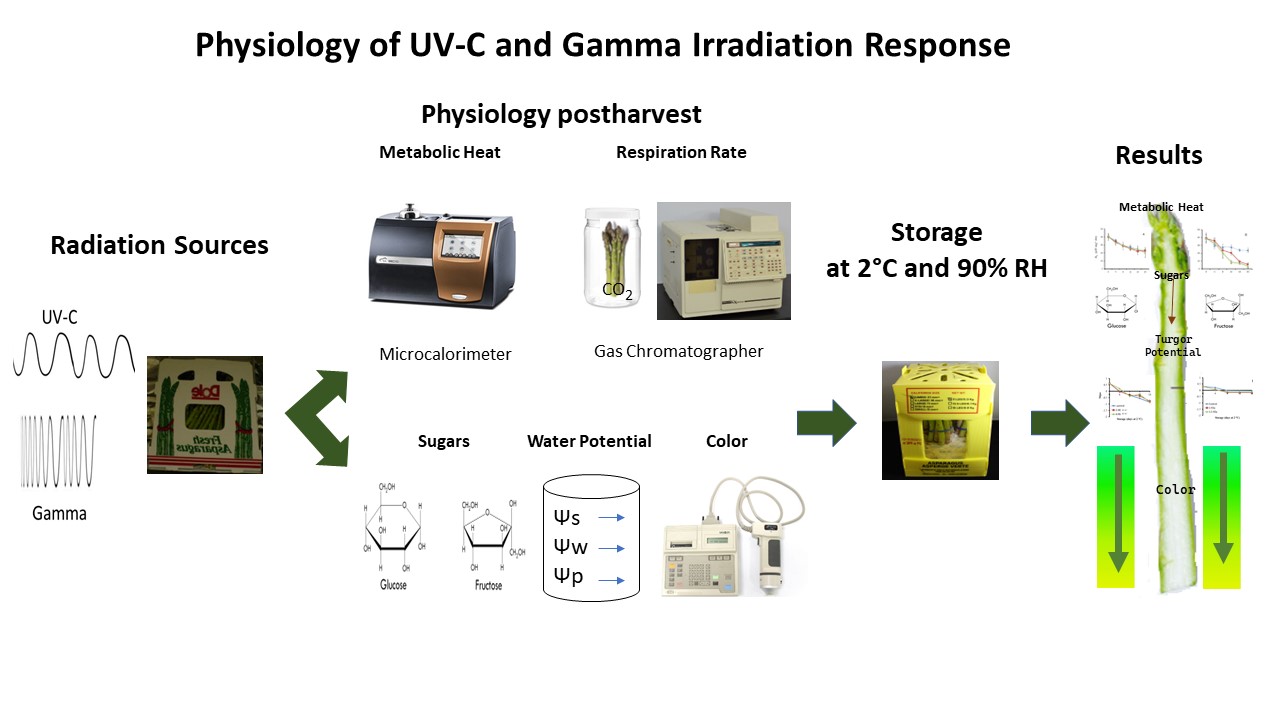“Hurdley technologies” utilized to improve postharvest life of asparagus spears (Asparagus officinalis L.)

Published 2024-04-04
Keywords
- Asparagus officinalis,
- metabolic heat,
- postharvest quality,
- respiration,
- UV-C and Gamma irradiation
- water status ...More
How to Cite
Copyright (c) 2023 Dr. Alberto Sánchez, Dr. Martin, Dr. Gardea, M. en C. Antonio, M. en C. Javier Ojeda, Dra. Troncoso

This work is licensed under a Creative Commons Attribution 4.0 International License.
Abstract
Asparagus (Asparagus officinalis L.) has short shelf-life due to the high metabolic activity of the apical meristems. Storage at low temperature and high relative humidity is used commercially to keep fresh asparagus spears. Techniques denominated “Hurdley technologies” (UV-C or gamma irradiation) have been tested in fruits and vegetables to extend postharvest life. These technologies were used to extend postharvest shelf life of asparagus spears by inhibition of meristematic activity. Spears were irradiated with UV-C at dosages of 2.46, and 4.93 kJ m-2 and gamma irradiation at 1 and 1.5 kGy, before storage at 2°C and 90% relative humidity (RH) for 20 days. Metabolic heat (Rq) was measured in apical meristems, as well as whole spear respiration, sugars content, water potential components and color descriptors. Metabolic heat and whole spears respiration rate did not show differences due to effect of UV-C treatments, while spears treated with gamma radiation showed a metabolic activity inhibition of 10 and 15% for 1 and 1.5 kGy, respectively, while whole spear respiration rate was not affected. Changes in color variables showed a slight reduction in gloss. Sugars content in UV-C remained unchanged, while gamma radiation induced a reduction in glucose. An increase in fresh weight loss was noticeable on those treated with gamma irradiation. No changes in water potential components were observed. It was concluded the treatments used did not reported positive benefits in extending asparagus spears shelf life.





